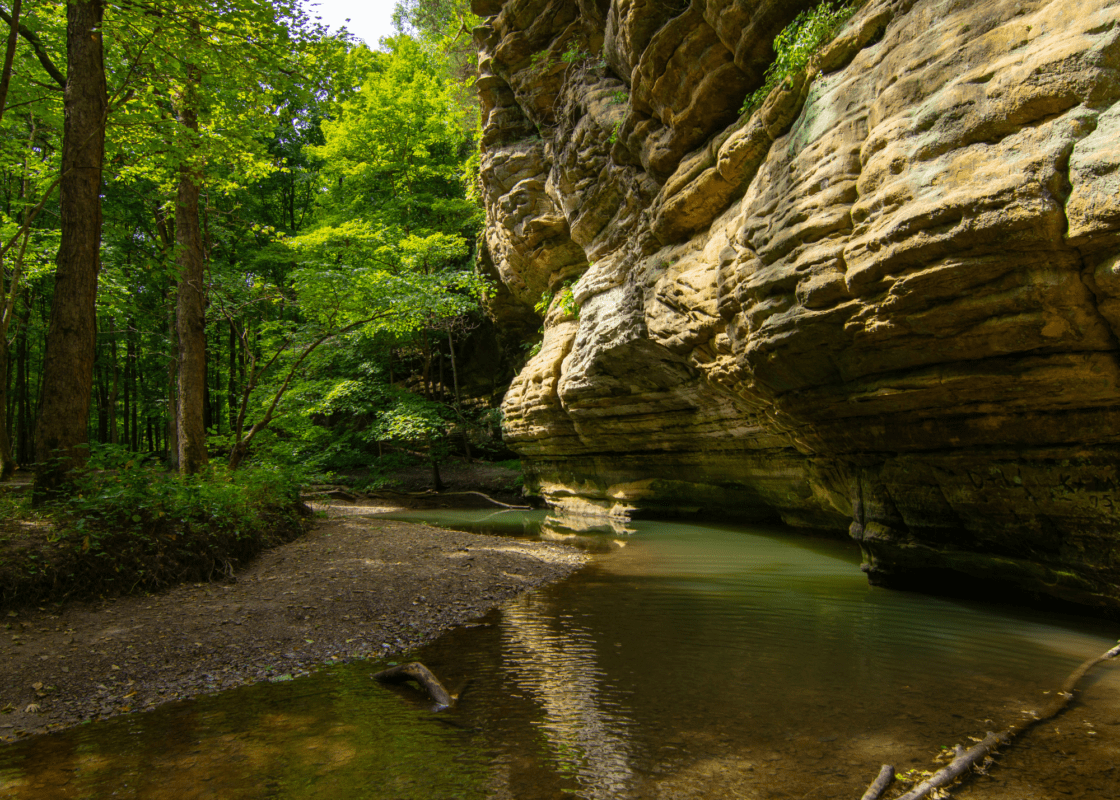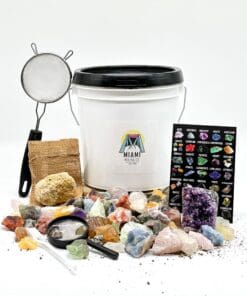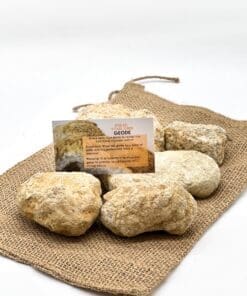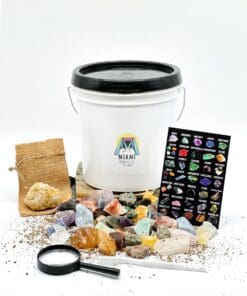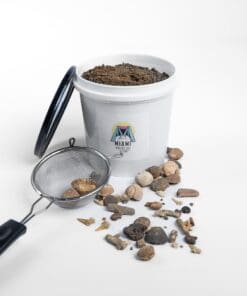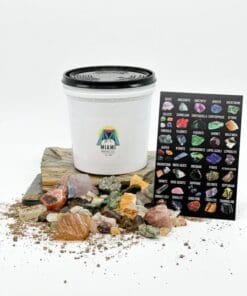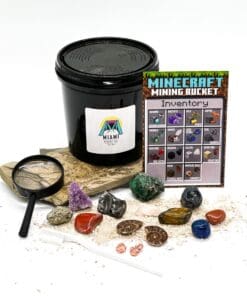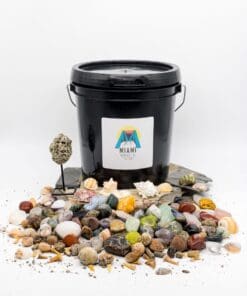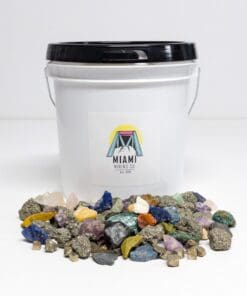Gem Mining in Illinois Explored: Unearth Gemstones with Ultimate Guide
The Land of Lincoln, better known as Illinois, is not only rich in history but also in geological treasures. Gem mining in Illinois is a fascinating journey into the depths of the Earth, revealing sparkling treasures that captivate amateurs and professionals alike. Beyond their physical allure, these gems weave tales of geology, history, and human endeavor. This comprehensive guide will delve into the diverse gemstones found in Illinois, the best places to mine them, the rich history associated with them, and practical advice for both novice and experienced miners.
The Most Popular Gemstones in Illinois
Illinois’s geological history has rendered it a treasure trove of gemstones, ranging from the commonplace to the exceedingly rare. These gemstones are windows into the past, each with its unique story of formation, characteristics, and allure.
Rare Gemstones Found in Illinois:
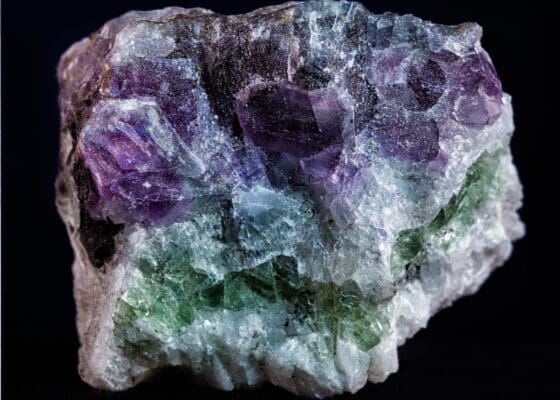
| Gemstone | Description |
|---|---|
| 1. Fluorite | Known as the state mineral of Illinois, Fluorite is prized for its array of vibrant colors, most commonly purple, but also blue, green, and yellow. |
| 2. Celestite | This pale blue mineral crystal is often found within geodes and is sought after for its ethereal, sky-blue hue. |
| 3. Sphalerite | A gem with a fiery brilliance, Sphalerite ranges in color from yellow, orange to brown and even black. It’s valued for its exceptional dispersion. |
| 4. Galena | While primarily an ore of lead, galena’s bright silver color and cubic formations can be exceptionally beautiful, making it a collector’s delight. |
| 5. Barite | Found in a range of colors, from colorless to yellow and blue, Barite is recognized for its high density and tabular crystals. |
Common Gemstones Found in Illinois:

| Gemstone | Description |
|---|---|
| 1. Quartz | An abundant mineral, quartz can be found in an array of colors in Illinois, including clear, smoky, and rose varieties. |
| 2. Calcite | With its diverse crystal forms and colors, Calcite is often found in limestone caves or alongside fluorite deposits. |
| 3. Chalcopyrite | This metallic mineral, often mistaken for gold, sports a brassy yellow hue and is sometimes referred to as “fool’s gold.” |
| 4. Pyrite | Also known as “fool’s gold,” pyrite is a shiny, gold-colored mineral that forms in cubic or multifaceted crystals. |
| 5. Dolomite | A common mineral in Illinois, Dolomite can be found in sedimentary rocks and has a pearly luster. |
| 6. Gypsum | Known for its softness, Gypsum crystals are transparent to translucent and are often used for carvings and ornamental purposes. |
| 7. Hematite | This iron oxide mineral is dark gray or red in color and is a source of iron ore in Illinois. |
| 8. Marble | While not a gemstone, marble is a metamorphic rock widely used for sculpture and as a building material. It can be found in various colors in Illinois. |
| 9. Mica | Recognized for its sheet-like structure, mica can be peeled off into thin, transparent layers. |
| 10. Feldspar | Common in granite rocks, feldspar often exhibits a pinkish hue and is one of the most abundant minerals on the Earth’s crust. |
This diverse range of gemstones found in Illinois is a testament to its rich geological heritage. Whether you’re an amateur rockhound or a seasoned gem collector, Illinois’s gemstones are sure to captivate and inspire.
Top Gem Mining Locations in Illinois
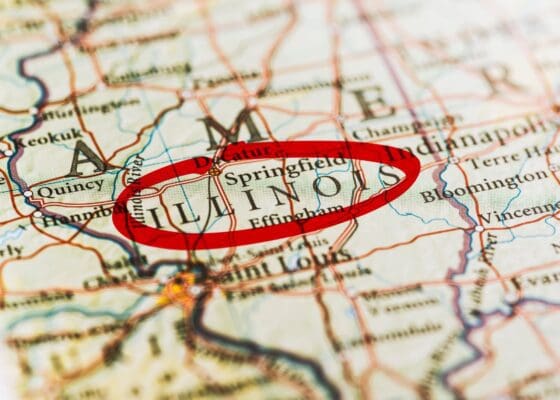
Illinois, with its vast mineral reserves, offers a variety of gem mining locations, perfect for both novices and seasoned gem enthusiasts. Here are the top 10 mining spots that promise a rewarding experience:
- Cave-in-Rock State Park: Located on the Ohio River in Hardin County, this park is famous for its fluorite mines. The park is open from dawn to dusk, with no fees for entry, but mining might have separate charges.
- Hickory Creek Barite Mine: Situated in Hardin County, this mine is a prime spot for Barite crystals. Operating hours vary, so it’s best to contact the mine ahead of time. There might be a nominal fee for mining.
- Rosiclare Mine: Once a leading producer of fluorite, this mine in Rosiclare is a must-visit for gem enthusiasts. It’s advisable to check the operating hours and fees before planning a visit.
- Keokuk Geode Region: Straddling parts of Illinois, this region is famous for its stunning geodes with quartz, calcite, and even rare minerals. Many private farms operate mines with varied hours and fees.
- Jacob’s Geode Shop and Mine: Located in Hamilton, this site lets you dig for geodes and offers a shop where you can purchase identified specimens. They’re open daily from 8 am to 5 pm, with a small mining fee.
- Linwood Quarry: Found in Buffalo, Scott County, this quarry is abundant in calcite and barite crystals. Visiting requires prior permission, and the operating hours are usually from 9 am to 4 pm.
- Annabel Lee Mine: Located near Harris Creek in Hardin County, this mine offers fluorite in diverse hues. Contact the mine for details on operating hours and fees.
- Lone Elm Mine: Situated in Spar Mountain area of Hardin County, it’s an excellent place for sphalerite and calcite. Before planning a visit, ensure you check the hours and any applicable fees.
- St. Peter Sandstone Mines: Spread across LaSalle County, these mines are known for fine quartz sand. While mining might be restricted in some areas, several operators allow public gem hunting for a fee.
- Harris Creek District Mines: This region, stretching across Saline and Pope counties, is famous for its fluorite, calcite, and barite. Each mine within the district has its own operating hours and fee structures.
When planning a trip to any of these locations, always ensure you have the necessary permissions, if required. Moreover, equipping oneself with the right tools and adhering to safety measures is paramount to ensure a fruitful and enjoyable gem mining experience in Illinois.
History of Gem Mining in Illinois
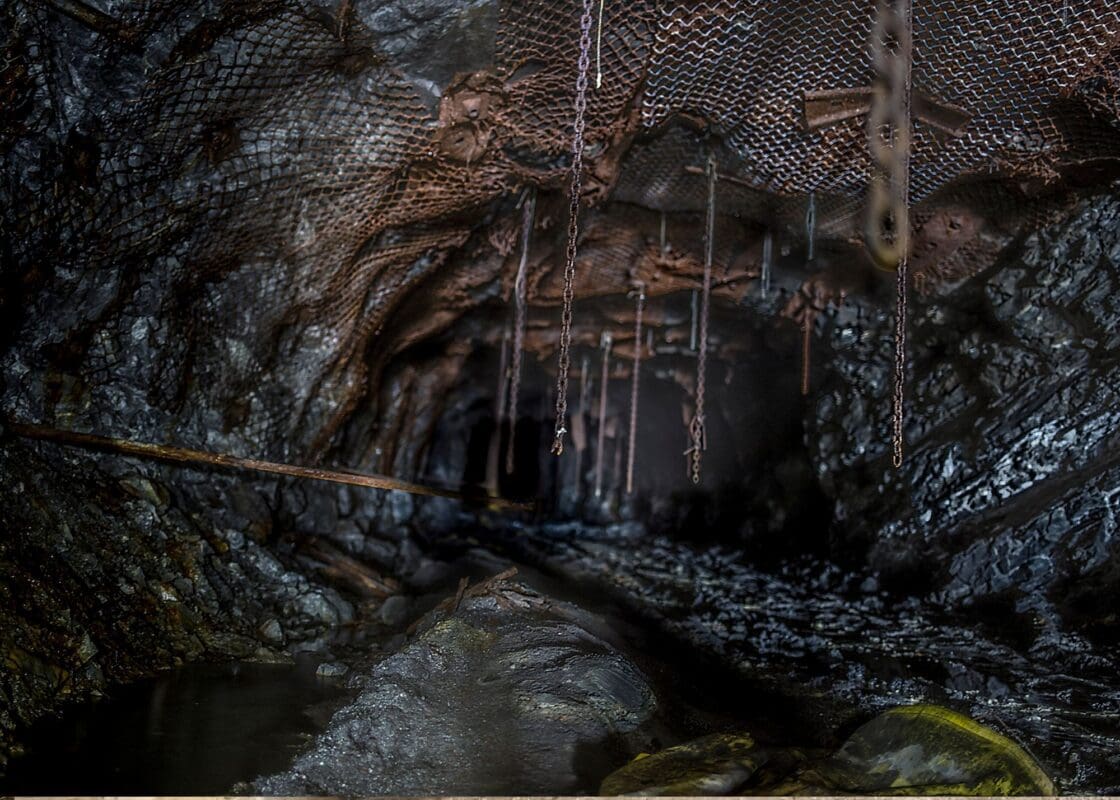
The rich tapestry of gem mining in Illinois is steeped in tales of discovery, economic booms, and the passionate pursuit of Earth’s buried treasures. Delving into the annals of Illinois’s mining history reveals how intertwined the state’s growth and development has been with its geological endowments.
In the 19th century, Illinois’s southern tip emerged as a hub for fluorite mining, a mineral that was to become emblematic of the region. Fluorite’s allure lay not just in its vibrant hues but also in its industrial applications. It became an essential flux in steel manufacturing, propelling Illinois to become the nation’s top producer of this mineral by the mid-20th century. Recognizing its significance, Illinois even designated fluorite as its official state mineral in 1965.
But the story of gem mining in Illinois extends beyond just fluorite. The Keokuk Geode Region, stretching along the Mississippi River, has for decades enthralled both amateur rockhounds and seasoned geologists. Its geodes, with interiors shimmering with quartz, calcite, and even the rare celestite, are testimonies to volcanic activities from millions of years ago.
Historically, the state also saw a flurry of activity around the extraction of lead, zinc, and coal. Towns like Galena owe their names to the mineral deposits discovered in their vicinity; Galena, in fact, is the natural mineral form of lead sulfide.
However, it wasn’t all about industrial pursuits. Over the years, the allure of Illinois’s gemstones became a recreational passion as well. Families and individuals flocked to the state’s mines, not in search of commercial gain, but driven by the thrill of discovery. They came, and still come, to uncover the Earth’s secrets, piece by sparkling piece.
Today, while many commercial operations have dwindled, the legacy they’ve left behind continues to shape the state’s landscape. Abandoned mines have become historical sites, and many mining areas have transformed into educational hubs where the next generation can learn about the state’s rich geological and cultural heritage.
In essence, the history of gem mining in Illinois is not just about minerals and economic gains; it’s a chronicle of human curiosity, endeavor, and an enduring relationship with the land.
Gem Mining Regulations in Illinois

In a state as geologically rich as Illinois, the responsible and sustainable harnessing of its mineral resources becomes paramount. To this end, the state has established a framework of regulations designed to strike a balance between allowing the exploration of these natural treasures and ensuring the protection of its environmental and historical heritage.
One of the primary governing bodies overseeing mineral extraction in Illinois is the Illinois Department of Natural Resources (IDNR). The IDNR ensures that all mining activities, whether commercial or recreational, adhere to specific guidelines aimed at preserving the state’s ecological balance.
For those seeking to engage in recreational gem mining, it’s essential to know that not all lands are open to the public for mineral collection. Before embarking on any gem-hunting adventure, enthusiasts must verify if the area is public or privately owned. If it’s the latter, obtaining explicit permission from the landowner is mandatory. Trespassing on private lands can lead to severe penalties.
Additionally, in certain protected areas, like state parks or natural reserves, gem hunting might be restricted or require special permits. For instance, while Cave-in-Rock State Park is renowned for its fluorite deposits, there are specific zones within the park where collecting is prohibited to preserve the natural and historical environment.
Furthermore, the state has guidelines regarding the volume and type of minerals that individuals can collect. These limitations ensure that over-mining doesn’t deplete the state’s resources or disturb its ecological balance.
It’s also important to mention the Illinois Surface Mining Act, which caters to larger, commercial operations. This act ensures that mining companies adhere to strict environmental standards, from the extraction phase right through to the restoration of the mined land. Commercial mines are obligated to secure proper permits, undertake regular inspections, and ensure land reclamation post-mining.
While the regulations might seem stringent, they serve a purpose beyond just preservation. They aim to educate the public about the importance of sustainable practices. By understanding and respecting these rules, gem enthusiasts can ensure that the treasure troves of Illinois remain accessible and abundant for generations to come.
In conclusion, while Illinois welcomes gem enthusiasts and miners, it advocates for an informed, respectful, and environmentally-conscious approach to its geological riches. By adhering to the state’s regulations, miners not only protect the land but also contribute to the sustainable legacy of gem mining in Illinois.
Necessary Tools and Equipment for Gem Mining in Illinois
Embarking on a gem mining adventure in Illinois requires more than just enthusiasm and a keen eye; it’s imperative to be equipped with the right tools to enhance the experience and ensure success. Here’s a comprehensive guide to the essential tools and equipment tailored to the state’s diverse mining terrains:
1. Screening and Classifying Tools: Reveal those hidden treasures!
Description: Especially vital for riverbed or open-pit mining, these screens help separate the gemstones from the surrounding dirt and debris. Given the varied size of gemstones in Illinois, having screens of different mesh sizes can be beneficial.

🛒 Explore Top Screening Sets on Amazon
2. Shovels and Trowels: Digging deep or just scratching the surface?
Description: Whether digging in soft soils or scooping out loose gravel, a sturdy hand shovel is invaluable. Its compact size allows for precision in extracting gems without causing excessive disturbance.

🛒 Find Quality Shovels and Trowels on Amazon
3. Picks and Hammers: The backbone of any gem hunting endeavor.
Description: Often referred to as a rock hammer, this tool is a staple for every gem hunter. With a flat head on one side and a pointed tip on the other, it’s perfect for breaking open rocks and extracting gems.

🛒 Check Out Best Picks and Hammers on Amazon
4. Buckets: Your trusted companion for carrying treasures.
Description: Especially when mining in riverbeds, buckets are used to collect large amounts of soil or gravel, which can then be sifted through at leisure.

🛒 Shop for Reliable Buckets on Amazon
5. Magnifying Glass: Every detail counts!
Description: For the finer details that the naked eye might miss, a magnifying glass comes in handy. It’s particularly useful for inspecting and identifying smaller gemstones.

🛒 Grab Your Magnifying Glass on Amazon
6. Guidebooks and Field Guides: Knowledge at your fingertips.
Description: Especially for beginners, having a pocket-sized guidebook to gemstones common in Delaware can be immensely helpful. These guides offer visual references and descriptions, aiding in the identification of your finds.

🛒 Discover the Best Field Guides on Amazon
7. Containers and Bags: Organize, store, and flaunt your finds.
Description: As you gather gemstones, having durable bags or buckets ensures safe storage. Labeling them based on location or type of stone can be helpful for post-trip analysis.

🛒 Shop for Storage Solutions on Amazon
8. First Aid Kit: Better safe than sorry!
Description: Given the outdoor nature of gem hunting, minor injuries like cuts or scrapes are possible. A basic first aid kit equipped with antiseptics, bandages, and other essential items should be part of your gear.

🛒 Secure Your First Aid Kit on Amazon
Lastly, always remember that each mining site in Illinois might have its own unique challenges and requirements. It’s beneficial to research the specific location beforehand and tailor your toolkit accordingly. With the right equipment in tow, every gem mining expedition in Illinois promises to be both rewarding and educational.
Tips and Tricks for Successful Gem Mining in Illinois

Gem mining in Illinois, with its diverse landscapes and rich mineral deposits, can be an exhilarating experience for both novices and seasoned miners. However, the success of the adventure often hinges on more than just luck. Knowledge, preparedness, and a few insider tips can make all the difference. Here are some insights to elevate your gem hunting experience in the Prairie State:
- Research the Area: Before heading out, do thorough research on the specific mining site. Understand its geological history, which will provide clues about potential gemstone deposits.
- Time it Right: While gem mining can be a year-round activity, certain seasons may offer better prospects. Post-rainy seasons can unearth new gem deposits in riverbeds, while cooler months might be more comfortable for open-pit mining.
- Start Early: An early start allows for cooler temperatures, fewer crowds, and maximized daylight hours. It’s especially beneficial in popular mining areas where the best spots can get taken quickly.
- Observe the Land: Instead of randomly digging, observe the lay of the land. Natural indicators, like specific rock formations or the convergence of multiple streams, can hint at gem-rich areas.
- Network with Locals: Engaging with local miners or residents can provide invaluable insights. They might share lesser-known spots, recent discoveries, or tips specific to the area.
- Practice Patience: Gem mining isn’t always about instant gratification. It requires patience, persistence, and sometimes multiple visits to the same location to strike gold (or, in this case, gems).
- Safety First: Always prioritize safety. Stay aware of your surroundings, especially near cliffs, caves, or water bodies. Inform someone about your location and expected return time, and never mine alone in secluded areas.
- Tread Lightly: Practice responsible mining. Refrain from using heavy machinery or tools that might cause ecological damage. Once done, restore the area to its natural state as much as possible.
- Log Your Finds: Maintain a journal of your mining adventures. Document locations, findings, dates, and other observations. Over time, this log can become an invaluable tool, revealing patterns or new locations worth exploring.
- Stay Updated: Regulations, access permissions, or the gem-rich zones of a location might change over time. Regularly checking for updates ensures you’re always in compliance and in the know.
Gem mining in Illinois is as much about the journey as the destination. The thrill of discovery, the connection with nature, and the stories each gem holds make every expedition special. With the right approach and a sprinkle of patience, Illinois’s landscapes promise treasures waiting to be uncovered by those willing to seek them out.
Handling Your Gemstone Finds
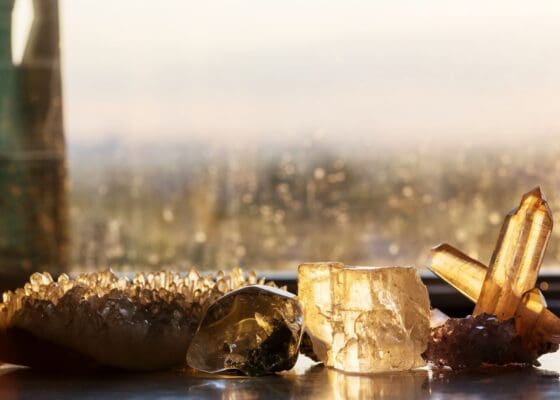
Unearthing gemstones in the rich terrains of Illinois is only the beginning of your journey. Post-discovery, the way you handle, process, and care for your finds can determine the true value and longevity of your treasures. Here’s a comprehensive guide to ensuring your gemstones remain as dazzling as the day they were unearthed:
- Immediate Cleaning: Once extracted, gemstones are often encrusted with dirt or clay. Use a soft brush and water to gently clean the surface. For tougher residues, soaking the gems in water for a few hours can help.
- Storage: It’s essential to store your finds properly. Use individual pouches or containers, preferably lined with soft material, to prevent gems from scratching one another.
- Identification: Before any further processing, accurately identify your gemstones. Consult with local gemologists or use reference books specific to Illinois gemstones. Knowing what you have can dictate the subsequent steps of care and processing.
- Grading: Not all gemstones are of equal value. Grading your finds based on size, clarity, color, and other factors will help in determining their potential value and deciding whether they’re worth further refinement.
- Cutting and Polishing: While some stones look beautiful in their raw form, others benefit from cutting and polishing. If you’re unfamiliar with the process, consider consulting a professional gem cutter to best showcase the gem’s innate beauty.
- Setting and Mounting: Some gems might be worthy of being turned into jewelry or decorative pieces. Engage with skilled craftsmen who can transform your finds into wearable or displayable art.
- Documentation: Keep a detailed record of where and when you found each gemstone, its initial state, any processing it underwent, and its final form. This adds to its provenance, potentially increasing its value.
- Insure Valuable Finds: If you happen upon a particularly valuable gem, consider getting it insured. Before doing so, have it appraised by a certified professional to determine its market value.
- Continuous Care: Even after processing, gemstones require care. Avoid exposing them to harsh chemicals, extreme temperatures, or direct sunlight for prolonged periods, which might affect their color and structure.
- Showcasing: If you’re not keen on selling or setting your finds, consider showcasing them. Acquire display cases that protect the gems from dust and allow you to share your passion with others.
Remember, every gemstone, whether a dazzling centerpiece or a modest, unassuming stone, tells a story—a story of time, pressure, and the very heart of Illinois’s landscapes. Treating them with the care they deserve ensures that these narratives continue to shine brightly for generations to come.
Famous Gemstone Finds in Illinois
Illinois, with its rich geological history, has witnessed its share of astonishing gemstone discoveries over the years. These significant finds not only kindled the dreams of many aspiring gem hunters but also played a pivotal role in shaping the state’s mineralogical narrative. Let’s delve into some of the most renowned gemstone finds in Illinois that have left an indelible mark on history:
- The Keensburg Sapphire: Discovered near the town of Keensburg, this sapphire weighing over 40 carats took everyone by surprise. Not only was its size noteworthy, but its deep blue hue and clarity were also unparalleled, making it one of Illinois’s crown jewels.

- Galena Fluorite Cluster: Found in the depths of the Southern Illinois mines, this particular cluster of purple and yellow fluorite crystals stood out due to its unique formation and vibrancy. It became synonymous with the state’s rich fluorite deposits.
- Rosiclare Calcite Crystal: Hailing from the Rosiclare region, this large, clear calcite crystal is renowned for its perfection and geometric shape. Its discovery sparked further exploration and cemented the region’s significance in gem hunting circles.
- Shawneetown Quartz Geode: Unearthed near Shawneetown, this geode stunned everyone with its interior lined with sparkling clear quartz crystals. Its beauty has been celebrated in various gem and mineral exhibitions across the country.
- Elkville Diamond Specimen: While not a true diamond, this quartz crystal found near Elkville mesmerized enthusiasts with its diamond-like clarity and brilliance. Its resemblance to the precious stone earned it its unique moniker.
- Cave-In-Rock Barite Roses: The Cave-In-Rock region unveiled barite formations resembling roses, their delicate structures and colors echoing the petals of the flower. They have since become emblematic of the state’s mineral diversity.
- Marion’s Celestine Cluster: Discovered in the heart of Marion, this radiant blue celestine cluster is famed for its crystalline structure and is considered a centerpiece in many collections.
- Anna’s Amethyst Pocket: A chance discovery in Anna revealed a pocket teeming with amethyst crystals. The deep purple hues and varying sizes of the crystals created a sensation in the gem community.
- Metropolis Malachite Discovery: Hailing from Metropolis, this malachite specimen, with its intricate patterns and deep green hues, stands as a testament to the state’s mineral richness.
- Du Quoin Pyrite Sun: Found in Du Quoin, this flat, radiating pyrite formation resembling the sun is celebrated for its rarity and artistic appeal.
Each of these discoveries has etched a distinct chapter in Illinois’s gemstone lore. They serve as reminders of the state’s mineralogical bounty, inspiring generations of miners and enthusiasts to explore, dream, and hope for the next big find.
Additional Gem Mining Opportunities
Exploring the rich mineral terrains of Illinois can be a rewarding experience for gem enthusiasts. However, if you’re keen on broadening your gem hunting horizons, neighboring states also offer an abundance of opportunities. Here’s a glimpse into what awaits gem miners in the regions surrounding Illinois:
- Indiana Gem Mining: Indiana boasts of geodes filled with sparkling quartz crystals. The southern part of the state, in particular, is a haven for those in search of these stunning formations.
- Wisconsin Gem Mining: Beyond its famed dairy heritage, Wisconsin hides treasures like agates, jasper, and quartz in its rocky terrains, beckoning gem enthusiasts.
- Missouri Gem Mining: Renowned for its diverse mineral deposits, Missouri offers opportunities to find galena, calcite, and even the elusive drusy quartz.
- Kentucky Gem Mining: From fluorite crystals in hues of purple and blue to agate and quartz, Kentucky promises a vibrant gem mining experience.
- Iowa Gem Mining: Known for its geodes, particularly in the southeastern region, Iowa is a must-visit for those aiming to add unique quartz-filled formations to their collection.
Venturing out to these neighboring states not only broadens one’s gem mining repertoire but also deepens the understanding of the vast geological tapestry of the Midwest. Each state has its own mineralogical story to tell, waiting to be discovered and cherished by avid gem hunters.
Step up your gem mining game with insights from our comprehensive Gem Mining Near Me guide.
The Magic of Gem Mining & A Unique At-Home Experience
The lure of gem hunting in Illinois resonates deeply with both novices and experienced miners. The state’s diverse landscapes, from its rolling hills to shimmering riverbeds, offer a tantalizing promise of uncovering hidden treasures. Each expedition presents an opportunity to connect with nature, delve into the state’s rich geological history, and experience the unmatched thrill of discovery. Every unearthed gemstone narrates a tale of time, pressure, and the very essence of the Prairie State.
For those who might not always be able to venture out into the wild terrains or face challenges like weather constraints, there’s an equally enchanting alternative – the Gem Mining Kit. This kit encapsulates the magic of the hunt, allowing enthusiasts to sift through mineral-rich soil, right in the comfort of their homes. It’s an ideal blend of education, excitement, and convenience, making the wonders of gem discovery accessible to all. Whether in the vast expanses of Illinois or at your dining table, the allure of gem hunting remains undiminished.

